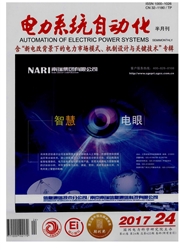

 中文摘要:
中文摘要:
共模电流抑制是非隔离型光伏并网逆变器需要解决的首要问题.文中给出了单相逆变拓扑的共模回路统一等效模型,该模型将所有隔离类和非隔离类拓扑统一起来,适用于所有桥类拓扑的漏电流抑制机理分析.对现有桥类逆变拓扑按漏电流抑制机理进行了系统分析和归类.在此基础上,对H5拓扑、Heric拓扑及一种H6拓扑进行了改进.一方面,通过拓扑结构的改变,用共模电压恒定的漏电流抑制途径取代改变共模阻抗的抑制途径,漏电流抑制效果得以提高;另一方面,通过调制策略的优化,逆变器可以实现非单位功率因数运行.在一台5 kW单相改进型H5拓扑并网逆变器上进行了实验研究,实验结果验证了理论分析的正确性.
 英文摘要:
英文摘要:
For transformerless photovoltaic (PV) grid-connected inverters,the leakage current needs to be suppressed to a specified range.According to the common leakage current analytical model for full-bridge and half-bridge structure inverters,the mechanism of leakage current elimination for commonly used inverters is systematically analyzed.Then the optimized topologies of H5,Heric and an H6-type configuration and their optimized modulation strategies are studied.By adopting a new scheme for leakage current suppression,the leakage current of these optimized inverters can be better eliminated; and with the proposed modulation strategies,the inverters will be able to operate in any power factors.Finally,the correctness of theoretical analysis is verified by the experimental results on a 5 kW optimized H5 prototype.
 同期刊论文项目
同期刊论文项目
 同项目期刊论文
同项目期刊论文
 期刊信息
期刊信息
